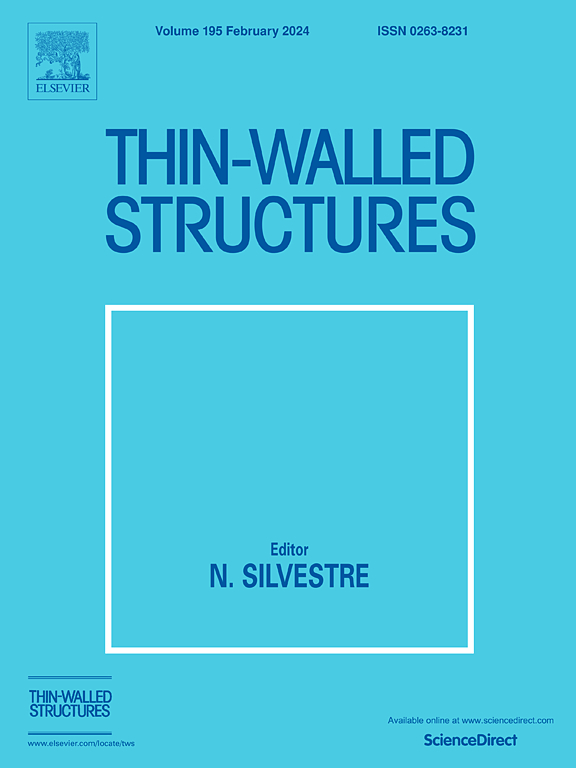Experimental and numerical assessment of self-pierce riveting of HIF steel and AA5083 sheets with fracture prediction
IF 5.7
1区 工程技术
Q1 ENGINEERING, CIVIL
引用次数: 0
Abstract
The current work aims to understand the impact of rivet hardness, diameter and length, and bottom sheet thickness on the quality of Self-piercing rivet (SPR) joints using pip and flat dies. High-strength interstitial free (HIF) steel and AA5083 sheets are joined, with AA as the bottom sheet. Upper sheet fracture during SPR is predicted by a novel strain mapping method through the Shear Fracture Forming Limit Curve (SFFLC) and the existing Hosford-Coulomb fracture model (HC model) using Abaqus, along with experimental validation. Successful SPR joints between the sheets are possible only with a pip die. Rivet cracks and local rivet bending are observed for the flat die. Rivet hardness, rivet length, and bottom sheet thickness show synergistic effects on riveting force, shear fracture, and joint indices. As a result, using smaller rivets (3.35 mm diameter) along with a flat die is not recommended for the sheets, and the 5.3 × 6.0/pip/2/480 configuration is the best choice for joining HIF steel and AA5083. In the numerical prediction, riveting force and indices are predicted with acceptable error within experimental variations and accuracy levels available in the literature. Moreover, SFFLC and HC model-based fracture predictions are accurate; however, SFFLC is easy to implement with calibrated lab scale test data.
求助全文
约1分钟内获得全文
求助全文
来源期刊

Thin-Walled Structures
工程技术-工程:土木
CiteScore
9.60
自引率
20.30%
发文量
801
审稿时长
66 days
期刊介绍:
Thin-walled structures comprises an important and growing proportion of engineering construction with areas of application becoming increasingly diverse, ranging from aircraft, bridges, ships and oil rigs to storage vessels, industrial buildings and warehouses.
Many factors, including cost and weight economy, new materials and processes and the growth of powerful methods of analysis have contributed to this growth, and led to the need for a journal which concentrates specifically on structures in which problems arise due to the thinness of the walls. This field includes cold– formed sections, plate and shell structures, reinforced plastics structures and aluminium structures, and is of importance in many branches of engineering.
The primary criterion for consideration of papers in Thin–Walled Structures is that they must be concerned with thin–walled structures or the basic problems inherent in thin–walled structures. Provided this criterion is satisfied no restriction is placed on the type of construction, material or field of application. Papers on theory, experiment, design, etc., are published and it is expected that many papers will contain aspects of all three.
 求助内容:
求助内容: 应助结果提醒方式:
应助结果提醒方式:


